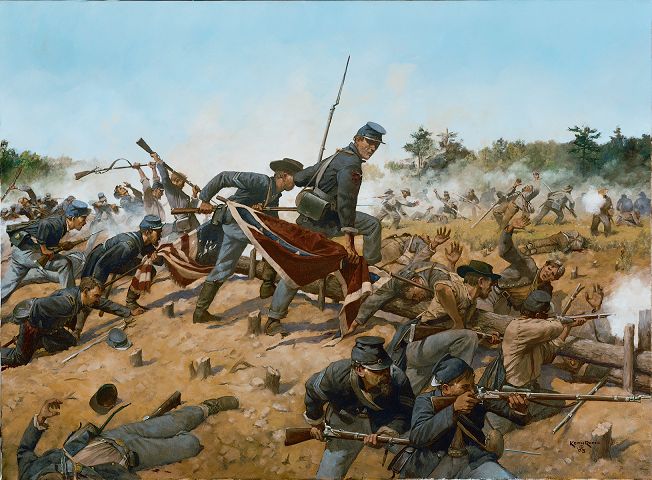Medal of Honor: Henry Hardenbergh
February 10, 2011
Posted in Civil War, Everytown USA, Henry Hardenbergh, Medal of Honor
Tags: Battle of Deep Bottom, Civil War, Everytown USA, Henry Hardenbergh, Medal of Honor
The origins of the Medal of Honor, the U.S. military’s highest award, can be traced to the Civil War. Fewer than 3,500 have been earned since its inception.
Henry Hardenbergh was born in Noble County, Indiana in the early 1840s. He grew to manhood on a farm in York Township, west of Albion. He joined the Union cause at the outbreak of hostilities, assigned to Company G of the 39th Illinois Volunteer Infantry.
By the spring of 1864, the 39th IVI sailed to Virginia and joined General Butler’s army along the James River. The unit lost severely at the May battles of Drury’s Bluff and Wier Bottom Church.
Later that summer, they met rebel forces at the Second Battle of Deep Bottom, Virginia. On August 16, the unit charged Confederate fortifications some 200 yards away. “Hardenbergh, carrying his regiment’s flag, was shot in the shoulder,” 39th Illinois historian, C.M. Stanley noted. “Another member of his regiment picked up the flag and carried it on, but Hardenbergh kept going on to the enemy earthenworks.”
Opposing sides blended into a savage, hand-to-hand brawl. Already wounded, but undaunted, Hardenbergh squared off with the color bearer from the 10th Alabama Infantry. “A desperate conflict at once took place between the two—one to capture and the other to defend that stand of colors,” the 39th Illinois Infantry Regiment History–Adjutant General’s Report explained. “After several minutes hard fighting, in which both received wounds, Hardenburg, dispatched his enemy, and captured the colors, which he presented in person to Major General Birney, commanding Tenth Corps.”

Henry Hardenbergh captures a Confederate standard at the Second Battle of Deep Bottom, Virginia - August 16, 1864. Original painting, by military artist Keith Rocco, hangs in Tinley Park, Illinois Village Hall. (Courtesy Keith Rocco)
———————————————————————————————————————-
In the end, the Confederate forces countered and retook the field. The 39th Illinois lost nearly half of their battle participants as killed or wounded. For his uncommon valor, Hardenbergh was awarded the Medal of Honor. In addition, General Butler recommended him for a battlefield commission to lieutenant and officer duties in a U.S. Colored Regiment.
Hardenbergh remained with his unit in the meantime and participated in the siege of Petersburg. On August 28, while on picket duty, he was shot and killed, just two days before his commission arrived. His remains rest at Poplar Grove National Cemetery, Petersburg, Virginia.
